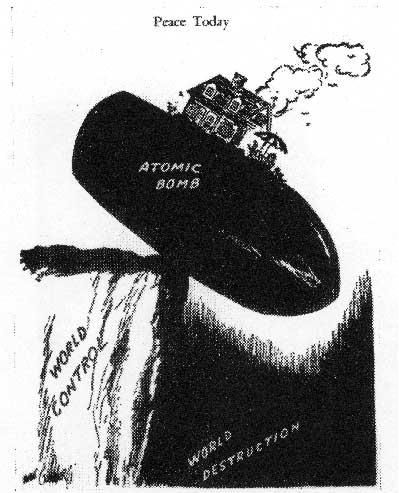I thought it would be an interesting look into our nation's political cartoon history if, this month, I took a look at a different editorial cartoon each day that won the Pulitzer Prize for Editorial Cartooning. Do note that we're talking basically 1922-1967 here, as since then, the Committee has awarded cartoonists generally for their work, not for an exemplary single cartoon. So in many ways, this is a snapshot of American politics (for better or for worse) over a forty-five year period.
Today we look at Reuben "Rube" Goldberg's 1948 award-winning cartoon.
Enjoy!
Rube Goldberg (1883-1970) is one of the most famous cartoonists of the 20th Century. I think I chose not to use him fro the Month of Political Cartooning Stars because he tends to be known mostly for non-political cartoons (which was what he did for most of his career), and since I already had used Dr. Seuss, I figured once was enough with that gag (especially with so many great cartoonists to choose from who WERE primarily political cartoonists).
Goldberg is known for his famous "inventions," which are inspiring to people even today. A Rube Goldberg machine is an elaborate machine designed to perform a simple task in the most convoluted way possible. Think of the breakfast-making machine at the beginning of Pee Wee's Big Adventure - that's a prototypical Rube Goldberg invention. He was so famous that the National Cartoonists Society give out an award in his name each year for the Cartoonist of the Year.
During his peak years, he had about three-four syndicated comic strips going at ONCE.
His most political years (like most cartoonists) were during the World War II era, where even the least political of cartoonists were joining in to denounce Nazi Germany. Goldberg began doing political cartoons for the New York Sun in 1938 (he quickly was syndicated nationally in this arena, as well). The Jewish Goldberg received so many death threats over his political cartoons that he actually had his children change their last names (his sons both took the last name George).
Goldberg's Pulitizer Prize winning cartoon was actually a POST-World War II cartoon from July of 1947 in the New York Sun.
I don't think you really need me to fill in the context for this cartoon, do you?
Strong piece of work from Goldberg, although it certainly hits the reader over the head with the metaphor, doesn't it?


